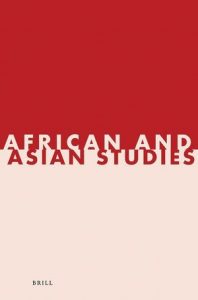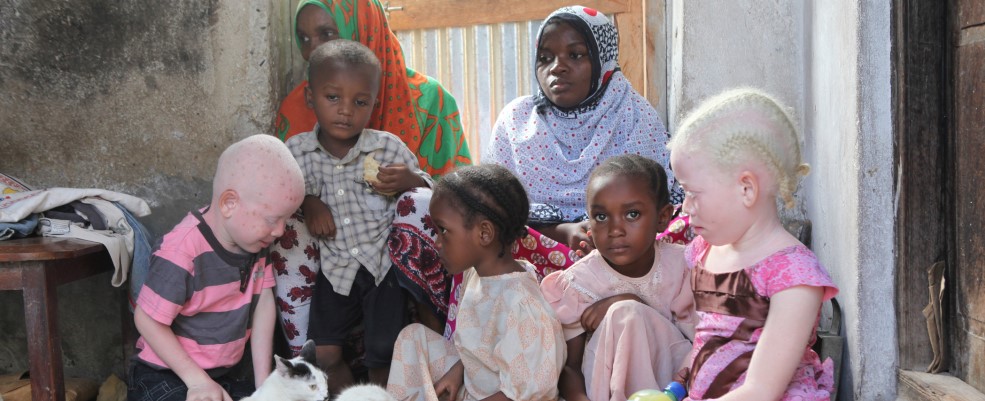My new research explores civil society and state perspectives on the human rights status of persons with albinism (PWA), a rare genetic condition characterised by reduced or absent pigmentation (melanin) of the hair, skin, and eyes. Albinism has a worldwide incidence of one in 20,000 births. However, rates as high as one in 1,000 births can occur in parts of Africa, such as the six sub-Saharan states in this study – Tanzania, Mozambique, Malawi, Democratic Republic of the Congo, Kenya, and Uganda.
As melanin is a photoprotective pigment that absorbs ultraviolet radiation, people living with Albinism are at increased risk of photodamage and skin cancer. Recent analysis suggests that 90 percent of PWA with skin cancer die of the disease before the age of forty. In order for a person to be affected by Albinism, both parents must carry the gene. In that case, there is a 25 percent chance that a child will be born with Albinism at each pregnancy.
To date, this issue has largely been overlooked by scholarly enquiry. The study examines the “situated knowledge” in 390 reports setting out civil society organisations’ (CSOs) testimony regarding the human rights situation of PWA in six sub-Saharan African states. The dataset comes from the Universal Periodic Review (UPR), the United Nations’ five-yearly treaty-monitoring programme.
PWA are subject to multiple, intersectional modes of human rights violations. They have been recognised as persons who face racial discrimination (proscribed under Article 2 of the UN Convention on the Elimination of All Forms of Racial Discrimination (CERD)) and stigmatisation on the grounds of colour (CERD 2016, Articles 20–21), as well as disability discrimination (proscribed under the UN Convention on the Rights of Persons with Disabilities).
In addition, Article 12 of the UN International Covenant on Economic, Social and Cultural Rights (CESCR) establishes ‘the right of everyone to the enjoyment of the highest attainable standard of physical and mental health. The steps to be taken by the States Parties to the present Covenant to achieve the full realization of this right shall include those necessary for… The prevention, treatment and control of epidemic, endemic, occupational and other diseases’.
However, despite these provisions, the findings reveal continuing serious human rights violations suffered by PWA, including widespread persecution, stigmatisation, and murder owing to discrimination, superstition and witchcraft. Moreover, it shows governments’ policy responses have generally been inadequate; while some record progress, others deny or downplay PWA rights violations.
As noted, Article 12 of CESCR is concerned with health care. Yet, the dataset details ongoing state failure to provide basic lifesaving products such as skin protector and sunglasses. For example, one civil society organisation explained that, “Many of those living with the condition cannot afford badly needed sunscreen and protective clothing … a bottle of sunscreen that lasts for two weeks sells for about $15 in Tanzania, a country where most people live on less than $1.50 a day”. It continued, “With no natural sun protection, fatal skin cancer will claim the vast majority of Africans with albinism before they reach 30 to 40 years of age. There is little awareness in the education system of the need for sun protection and sunscreen is not commonly available or affordable in most African countries”.
The wider significance of this new study is in highlighting the need for further research on this neglected topic, improved government policies (including raising awareness of the issue) and better monitoring of states’ response to their UN treaty obligations to people with albinism.
 The full findings can be found in the open access paper: Chaney, P. (2025) “Fatal Discrimination”: Exploring Civil Society and State Perspectives on the Human Rights Situation of Persons with Albinism in Sub-Saharan Africa, African and Asian Studies, Brill Publishers
The full findings can be found in the open access paper: Chaney, P. (2025) “Fatal Discrimination”: Exploring Civil Society and State Perspectives on the Human Rights Situation of Persons with Albinism in Sub-Saharan Africa, African and Asian Studies, Brill Publishers
Image credit: TiggyMorse via iStock

